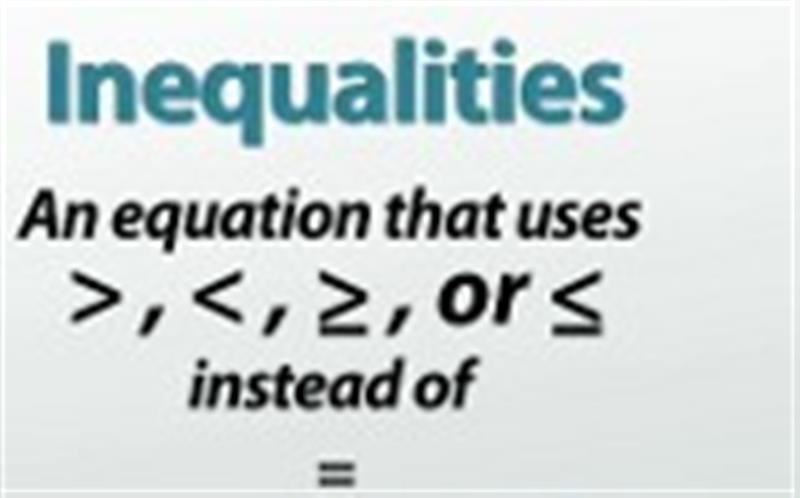What is Inequality ?

The symbols that can be used in inequalities
There are a lot of complicated topics in math, so it's really nice when you get to one where there's an easy explanation for what it is. That fact makes me happy to be writing this lesson on the question, 'what is an inequality?' Well, it's simple! An inequality is just an equation with one of these guys instead of an equal sign! The second you see a greater-than or less-than symbol, you know you've got an inequality.
They're actually really useful in our lives because it's pretty rare to find a situation where there's only one specific solution. You don't need exactly 80% on that history test to get a B; you need at least 80%. You don't need to be driving exactly 25 mph to be following the law; you need to be driving 25 mph or less. These are just a few examples of where inequalities come into our lives. Let's take a more in-depth look at another one that everyone can relate to: 'How should I spend my money?'
Two-Variable Inequalities
I know that when I got my first teaching job right out of college I was really exited for my first payday. I had had part-time tutoring jobs before, but nothing like this. This was a real job! Too bad I didn't realize that along with a real job I now had real bills. It ended up being the case that I had to spend basically all my money on rent, food, and other bills. I was bummed to say the least, but it meant that when I heard about a summer-school teaching opportunity later that year, I was all for it. That June, I got an extra $3,000 to spend on whatever I wanted!
I thought a lot about it and decided to spend the money on two things, video games and plane tickets. During my busy school year, I hadn't gotten to play as many video games as I usually do, and the thought of spending my summer days gaming all day and night was too enticing to ignore. But I was also living in California while my girlfriend was in Minnesota. We didn't get to see each other too often and this was a great way to make that happen.
So now I had a problem. I had $3,000 to split between $60 video games or $300 plane tickets, but I also thought that it'd probably be a good idea to put some of it into my savings account. What should I do? Should I just get a few video games and one plane ticket and save the rest? Should I get as many plane tickets as I can? I thought about making a list of all the different possibilities, but I quickly decided that my list would have taken up pages and pages of paper and wouldn't really help me make my decision. What I needed was one nice visual that showed me all the different choices I could make. 'You know what that sounds like?', I thought to myself, 'a graph!'
Two Variable Inequalities
60v + 300p ≤ $3000
If p=0, v =?
Example of a two-variable inequality
But before I could make the graph, I decided to write an inequality to represent the situation. While it would have been possible to create the graph without the inequality, I wouldn't have an easy way of checking which combinations of games and tickets are allowed without the inequality. This would have made me less organized and much more likely to make a silly mistake.
So when I sat down to write the inequality, I knew that no matter what, I couldn't spend more than $3,000. But I also didn't have to spend it all; I could save some of it. Therefore, the money I spend had to be less than or equal to $3,000. What I still needed was a mathematical expression for how much money I was going to spend. Because each video game was $60, 60v would be how much I spent on v number of video games. If I bought two, I would just do 60(2) = $120, and that would be how much I spent on video games. Using the same logic, 300p is how much I spent on p plane tickets, so then 60v + 300p would represent the total amount of money I spent.
So we have the inequality that allows us to quickly plugin combinations of games and tickets to see if I can afford it. But we still want the graph in order to see what my different options are in one nice picture.